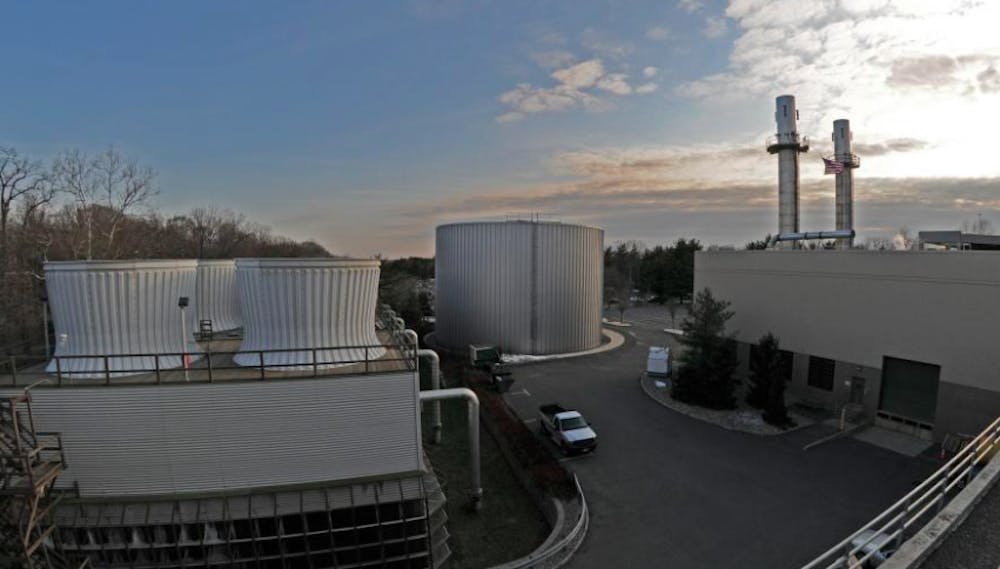In its recently published Sustainability Action Plan, the University set ambitious goals for reducing its environmental footprint. Aiming to reduce greenhouse gas emissions to zero by 2046, as well as curtail its water usage and waste production, the plan represents the second of Princeton’s formal commitments to sustainability. This is especially timely in the context of the recently passed student referendum, which called for clearer guidelines and timelines for how the University will achieve carbon neutrality.
Not only will these initiatives reduce Princeton’s own environmental footprint, in itself an unambiguously good thing, but they also set Princeton up as a model for how other universities – or perhaps more broadly, communities in general – may reduce their own environmental footprints. At the same time, I do find one glaring omittance from both these plans. There was not a mention, so far as I could tell, of an aspect of sustainability that many increasingly realize is absolutely crucial: aesthetics.
Why, and how, do aesthetics matter for sustainability? Such is a complex and multifaceted question, of course, to which I could not hope to fully do justice here. For a more in depth discussion of the topic, I direct the reader to the book “The Hand and the Soul: Aesthetics and Ethics in Architecture and Art,” which focuses on the intersection between aesthetics and ecology/environmentalism. For this brief article, particularly relevant is the chapter entitled “Re-earthing Cities: Aesthetics, Ethics, and Ecology in City Building” by Timothy Beatley, professor in the Department of Urban and Environmental Planning at the University of Virginia School of Architecture, with whom I have had the distinct pleasure to meet and converse with.
In his essay, Beatley argues that systems of energy production, traditionally hidden in urban planning, should instead be highlighted. “Such uses,” Beatley writes, referring to power plants as an example, “need not be camouflaged or isolated, but celebrated.” In particular, he cites as a key model the famous Vienna Power Station, designed by the Austrian artist and architect Friedensreich Hundertwasser, in which visitors can actively view the processes such as waste sorting and recycling which the plant performs.
Keeping Beatley’s ideas and models in mind, it would seem that our University, which has won numerous awards for its sustainability successes (rightfully so) and advertises its environmental initiatives themselves so well through the Office of Sustainability (also rightfully so), should similarly be at the forefront of expressing such an aesthetic of sustainability.
It is somewhat surprising, therefore, that this does not appear to be the case. In particular, I wish to draw attention to the fact that one of the most important reasons why Princeton is such a model for sustainability, its cogeneration power plant, is as well hidden, unadvertised, and invisible as it is.
The cogeneration plant, for those readers who don’t already know, generates roughly 15 megawatts of electricity each day to supply the University’s needs. Consisting of steam boilers, water chillers, an electric generator, and a thermal energy storage system, the cogeneration plant derives its sustainability prowess, to a large extent, from the fact that it recovers wasted exhaust heat from the turbine to heat water and make steam.
By necessity, the plant, which is quite sizable indeed, is located separate from the rest of campus, likely the main reason why it is so unknown to many students. But even when students, or perhaps more importantly visitors to our University, venture down to the plant, there is little about the design of the plant itself which attracts attention.

I walked down to the plant this past weekend for myself to investigate this, making a few sketches of the location to analyze its layout. Comparing it to other plants I have seen, and images online, I could find little that differentiated our remarkably efficient cogeneration plant aesthetically from its less efficient counterparts.
Namely, the same all-engineering, all-industrial motifs characterize the structure. Opaque, steel plating and grating completely hide those functions inside, with not even a window or shred of glass to give the passerby a glimpse. The landscape leading up to the structure, which landscape architects inform us is an extremely important aspect of how we interpret and react to buildings, is nothing except parking lots.
One could argue that this is an “industrial aesthetic” in itself, and of course this may be true. Indeed, such pure efficiency served as, in large part, the inspiration for the 20th-century modernist movement in architecture, pioneered by Le Corbusier, who famously adored automobiles and yachts for this reason. What I say here, however, is that this “industrial aesthetic” does not equate with a “sustainability aesthetic,” one that expresses not only the power and energy-generating capacities of the plant, but its environmental ethics.
Given the growing commitment to sustainability displayed by the University, both by students and by the administration, I think it is about time to change this.

In his chapter, Beatley proposes several ways to adapt energy systems to not only create energy but also express how they do so in environmentally ethical ways. “Urbanscapes that teach,” as he calls them, can make it “exciting to see how energy is produced and to know where our energy is coming from.” As he also notes, “there is a sheer beauty to seeing the technology used to produce energy.”
In the case of the cogeneration plant, accomplishing such an aesthetic could involve very minor and achievable alterations. One particular design intervention I could imagine would simply entail replacing select slabs of the previously opaque steel walls with transparent glass, interspersed at different areas to reveal those different inner workings of the plant described above. Informational texts about the plant’s capacities could be positioned next to such windows, explaining its inner workings to visitors and students alike in a way that reflects the University’s own pedagogical mission.
Importantly, though, my own suggestion for a design intervention here is by no means satisfactory by itself, nor should it be the end of the story. Coming from a scientific background, I am well aware that others would be more qualified than I to come up with such design proposals. To that end, I write this piece not so much to propose an idea myself, as to make a call for ideas from the broader University community. In particular, I welcome design proposals from students and faculty in those many University classes that are already devoted to sustainability, such as in the departments of architecture, civil engineering, and urban studies, among others. Ideas from the broader public generally, of course, are welcome, too.
One thing I should stipulate, however, is that any proposed alterations should not affect the actual workings of the plant. It would be ironic indeed for a design to interfere with what it is trying to celebrate, as it would be a truly nonsensical implementation of aesthetics.
By visually celebrating, rather than hiding, its cogeneration plant, Princeton could express to the world its commitment to sustainability, highlighting and more effectively communicating its already impressive sustainability numbers. At a time when the science and data of climate change seem insufficient to themselves sway society towards a more renewable energy future, aesthetic gestures such as this may provide a crucial catalyst.
Gabriel Lipkowitz is a senior concentrator in molecular biology. He can be reached at gel@princeton.edu.








